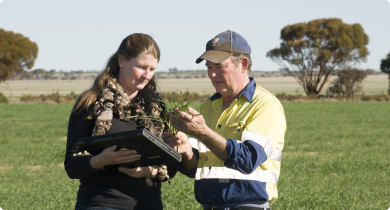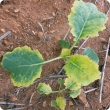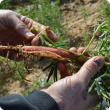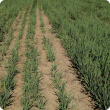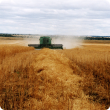Production & postharvest
The Department of Primary Industries and Regional Development contributes to the productivity, profitability and sustainability of plant-based agriculture. From broad scale dryland cropping systems to intensive irrigated production, we work with industry and business to address challenges in plant production through research and development, knowledge transfer and government policy settings.
Filter by search
Filter by topic
- (-) Remove Grains filter Grains
- Plant nutrition (75) Apply Plant nutrition filter
- Grains research & development (69) Apply Grains research & development filter
- Canola (53) Apply Canola filter
- Sowing (47) Apply Sowing filter
- Wheat (38) Apply Wheat filter
- Climate, land & water (24) Apply Climate, land & water filter
- Fertiliser (23) Apply Fertiliser filter
- Soil management (22) Apply Soil management filter
- Breeding & varieties (22) Apply Breeding & varieties filter
- Barley (21) Apply Barley filter
- Soils (20) Apply Soils filter
- Harvesting (17) Apply Harvesting filter
- Soil acidity (16) Apply Soil acidity filter
- Pulses (16) Apply Pulses filter
- Oats (15) Apply Oats filter
- Lupins (14) Apply Lupins filter
- Managing soils (12) Apply Managing soils filter
- Liming (11) Apply Liming filter
- Field peas (11) Apply Field peas filter
- Pests, weeds & diseases (9) Apply Pests, weeds & diseases filter
- Postharvest (8) Apply Postharvest filter
- Hay production (8) Apply Hay production filter
- Soil constraints (6) Apply Soil constraints filter
- Climate & weather (5) Apply Climate & weather filter
- Pastures (5) Apply Pastures filter
- Grains Research & Development (5) Apply Grains Research & Development filter
- Food, export & investment (5) Apply Food, export & investment filter
- Storage (4) Apply Storage filter
- Chickpeas (4) Apply Chickpeas filter
- Diseases (4) Apply Diseases filter
- Export services (3) Apply Export services filter
- Pests (3) Apply Pests filter
- Irrigated crops (3) Apply Irrigated crops filter
- Frost (3) Apply Frost filter
- Crop diseases (3) Apply Crop diseases filter
- Biosecurity (3) Apply Biosecurity filter
- Biosecurity & quarantine (3) Apply Biosecurity & quarantine filter
- Plant biosecurity (2) Apply Plant biosecurity filter
- Weeds (2) Apply Weeds filter
- Pest insects (2) Apply Pest insects filter
- Water repellence (2) Apply Water repellence filter
- Horticulture (2) Apply Horticulture filter
- Agricultural exports (2) Apply Agricultural exports filter
- Measuring and assessing soils (2) Apply Measuring and assessing soils filter
- Climate change (2) Apply Climate change filter
- Genetic modification (2) Apply Genetic modification filter
- Agribusiness Food & Trade (1) Apply Agribusiness Food & Trade filter

